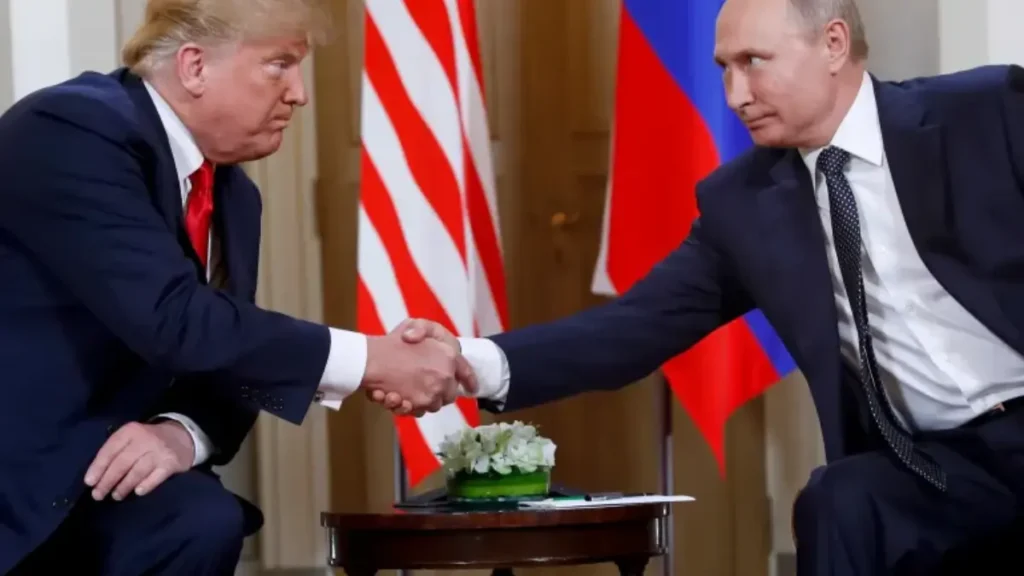Trump and Putin will meet in Alaska for a high-stakes summit as key US diplomatic posts remain vacant, raising concerns about preparation, expertise, and America’s negotiating strength.
Trump and Putin to Meet in Alaska for High-Stakes Summit Amid Diplomatic Gaps

Trump and Putin are set to hold a high-stakes Alaska summit, a meeting that comes at a time when US–Russia relations face tension and Washington’s diplomatic corps is facing staffing shortages.
The summit’s timing and circumstances are drawing concern from lawmakers, former diplomats, and foreign policy experts. Many worry that vacant ambassador positions, loss of foreign policy expertise, and reduced State Department staffing could weaken the US negotiating position.
Diplomatic Posts Remain Vacant Before the Summit
Ahead of the Trump and Putin Alaska meeting, the US has no confirmed ambassador to Russia. The position has been empty since career diplomat Lynne Tracy departed earlier this summer.
Ukraine is also without a confirmed ambassador following the retirement of Bridget Brink, who criticized what she described as the Trump administration’s “appeasement” toward Russia. Although career ambassador Julie Davis has been sent to Kyiv, she has not been formally confirmed by the Senate.
This pattern is echoed within the State Department, where the role of Assistant Secretary of State for European Affairs remains unfilled, with no official nominee. Former top European affairs official Louis Bono has been replaced by a political appointee who previously worked for Secretary of State Marco Rubio.
Loss of Expertise at the State Department
Beyond the vacancies, dozens of experienced diplomats, Russia experts, and foreign policy specialists have either been fired or resigned during Trump’s term. A former US diplomat stressed the importance of retaining institutional knowledge, stating:
“It’s a lost opportunity if you don’t use those experts and their insights.”
Such expertise is especially critical when negotiating with a seasoned leader like Vladimir Putin, who has decades of diplomatic and geopolitical experience.
Senator Shaheen’s Warning on ‘Seat-of-the-Pants’ Diplomacy
Democratic Senator Jeanne Shaheen of New Hampshire, ranking member of the Senate Foreign Relations Committee, has voiced strong concern about the lack of preparation.
“Diplomacy is not successful very often when it’s done fly by the seat of your pants,” she told CNN. “We need a careful, planned strategy for what we want to accomplish at a meeting like this, and we must engage people with the knowledge and expertise to make it effective.”
Her remarks reflect a broader worry that without strategic planning and seasoned negotiators, the high-stakes diplomatic talks in Alaska could fail to deliver meaningful progress.
Why Alaska? Symbolism and Strategy
Holding the meeting in Alaska is unusual but symbolic. Alaska lies geographically between the US and Russia, making it a neutral ground that avoids the political baggage of meetings in European capitals.
The choice also underscores the Arctic’s growing geopolitical importance. Both nations are interested in Arctic energy resources, shipping routes, and military positioning — all topics that could surface in the talks.
Potential Topics on the Summit Agenda
While the White House has not released an official list of discussion points, analysts believe the summit will likely include:
- Ukraine conflict and possible ceasefire initiatives
- NATO’s role in Eastern Europe
- Sanctions and their economic impacts
- Cybersecurity and election interference concerns
- Energy security and Arctic cooperation
With reduced foreign policy expertise at the table, some experts worry these discussions could tilt in Russia’s favor.
Historical Context of Trump and Putin Summits
From Reagan–Gorbachev to Bush–Putin, summits between US and Russian leaders have historically addressed high-stakes issues such as nuclear arms reduction and Cold War tensions.
However, unlike past meetings where career diplomats and policy experts played a major role in shaping the agenda, this Trump and Putin Alaska summit appears to be unfolding with minimal input from seasoned professionals—a fact that has alarmed many in Washington.
FAQs About the Trump and Putin Alaska Summit
Q1: Why is the Trump and Putin summit being held in Alaska?
Alaska is strategically located between the US and Russia, serving as a neutral venue and highlighting Arctic geopolitical interests.
Q2: What are the main concerns ahead of the summit?
The lack of confirmed ambassadors, loss of foreign policy expertise, and absence of top-level State Department officials are raising concerns.
Q3: Who will represent the US in the meeting?
President Donald Trump will lead the delegation, but several senior diplomatic posts remain unfilled.
Q4: Will Ukraine be a topic at the summit?
Yes, the Ukraine conflict and broader US–Russia relations are expected to be high on the agenda.
Q5: How is the Senate reacting to the summit?
Some senators, including Jeanne Shaheen, have warned that the lack of preparation could undermine negotiations.
Final Thoughts
The Trump and Putin Alaska meeting is shaping up to be a defining moment in US–Russia relations. But with vacant ambassador positions, State Department staffing shortages, and a noticeable loss of foreign policy expertise, the US risks entering the talks at a disadvantage.
Whether the summit results in constructive diplomatic breakthroughs or missed opportunities will depend on how well the administration compensates for its current gaps in staffing and strategic planning.

